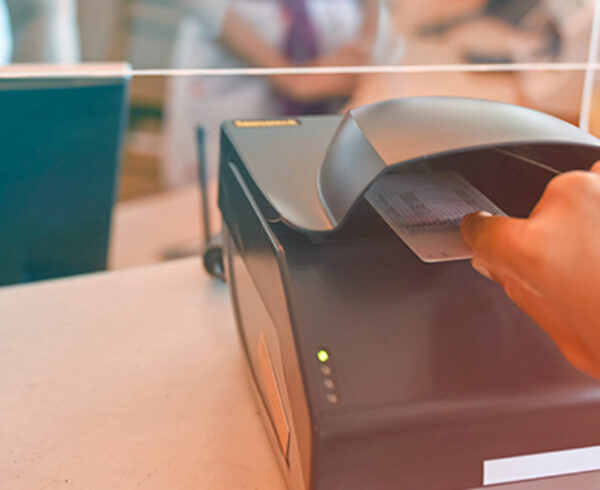No longer do you have to deal with exorbitant fees or incredibly slow service when using your cell phone overseas. The combination of eSIM and international travel makes it easier than ever to stay connected — no matter where you are in the world.
Using your cell phone in a foreign country has long been a serious issue. Traditionally, you either had to get a new SIM card for local service, or you had to put up with high fees and slow service. Thanks to eSIM cards, which are becoming common additions to new devices, that’s no longer the case.
The combination of eSIM and international travel will transform the overseas experience for professionals. It will be easier than ever to communicate and connect with colleagues, prospects and others in a foreign country, as well as more straightforward to communicate with the office and your loved ones back home.
Here’s more on eSIM cards, how they work, and how they benefit business Travelers.

What is an eSIM Card?
Cellular telephones have traditionally used SIM cards that connect the phones to mobile networks. SIM stands for “Subscriber Identity Module,” and SIM cards are basically memory cards that store your user information — your user ID, your home country, your carrier, etc. SIM cards can be inserted and removed from the phone itself. Got a new phone? All you have to do is transfer your SIM card from the old device to the new one, and all of your data will immediately be available.
The eSIM card is simply the latest and greatest version of the SIM card. It cannot be inserted and removed like a traditional SIM card. Rather, eSIM cards are attached to a phone’s motherboard. The data on an eSIM card can be rewritten onto a different card, which means it’s still easy to transfer your user data from one device to another.
What Devices are eSIM Cards Compatible With?
Your device may already be compatible with eSIM cards. The iPhone 11, XS, XR, 12 and 13 all use eSIM cards alongside nano-SIM cards (slightly smaller versions of the traditional SIM card). The iPhone SE also supports eSIM cards.
Many Android devices are also compatible with eSIM. All Google Pixels since the Pixel 2 use eSIM cards in tandem with nano-SIM cards. Samsung’s Galaxy S20 and S20 FE, Galaxy S21 Ultra 5G and Galaxy S21+ 5G, the Fold and Z Flip, and the Note 20 series all include eSIM support. Huawei’s P40 and P40 Pro both support eSIM. Microsoft’s Surface Duo offers eSIM compatibility. And the Moto Razr 2019 includes eSIM support.
The phones of the future are even more likely to support eSIM cards. As eSIM becomes the standard, it will become hard to find cell phones that do not support eSIM and international travel.

What are the Benefits of Having an eSIM Card?
If you’ve ever tried to remove your phone’s traditional SIM card, you know that task is easier said than done. You often must use a paperclip or safety pin to unlock the tray that holds your SIM card. With eSIM, there’s no tray to open since the card itself is attached to the motherboard. But that’s just one of many eSIM benefits. Here’s a look at the 3 primary reasons why eSIM is better for cell phone users in the long run:
- Space: Because eSIM cards are so small, there’s more room inside a phone for other features. Imagine having a larger, longer-lasting battery. Imagine having a better, more powerful camera. Those features may be possible thanks to eSIM.
- Waterproofing: Because eSIM cards don’t need to sit at the edge of the phone like traditional SIM cards, they can be placed closer to the center of a device. This feature could make it easier for cell phone manufacturers to create and offer truly waterproof devices in the future.
- Dual cards: eSIM cards allow for dual SIM setups. This setup gives you the option to keep separate sets of user data. For example, dual SIM might empower you to have a personal phone number and a work phone number on the same device. It might also empower you to use a different SIM card while traveling internationally, allowing you to use your same device without paying exorbitant fees. (More on this below.)
How to Use eSIM When Traveling
In years past, international Travelers would have to physically swap out the SIM card if they wanted to continue using a personal device while abroad. Using a personal device without swapping SIM cards would come with high carrier fees. Or, if the user’s carrier did offer free international data, it would often be limited and incredibly slow — 2G speeds, for example.
With eSIM cards, it’s easier than ever to continue using your own device while out of the country.
If your device has an eSIM card, all you have to do is buy a data plan in the country where you’re traveling. You can then use a QR code to activate that plan via the eSIM card on your cellular device. Just like that, you’re able to use your own phone like anyone else in a foreign country.

Use Your Device Easily and Affordably While Abroad
The benefits of eSIM and International Travel: As eSIM cards become more common, services for buying data packages specific to foreign countries are also becoming more widely available. For example, at JTB Business Travel, we have a partnership with CeliTech that allows you to select your destination country, enter the dates when you’ll be traveling, and choose the amount of data you need for the trip. It’s that easy.
JTB Business Travel is the travel management company of choice for businesses large and small. We use a common-sense approach to business travel to inform every service we provide and every recommendation we make. Get in touch to learn more about what JTB can do for your business and its Travelers.














Leave a Comment